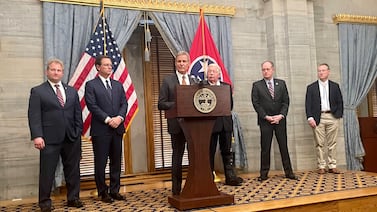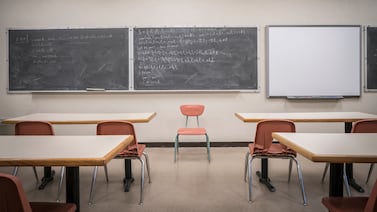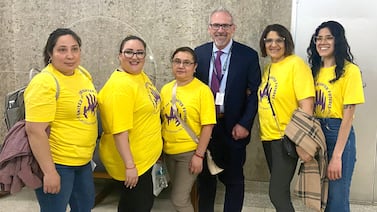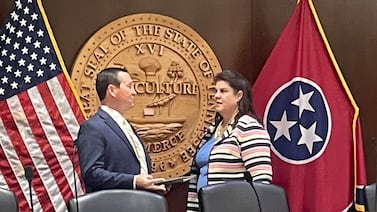Education has been a top issue in the Illinois governor’s race, as the state’s 852 districts continue to grapple with the fallout of pandemic disruptions, declining test scores, and an uptick in chronic absenteeism rates.
Incumbent Gov. J.B. Pritzker, a Democrat running for a second term in office, has said that he wants to increase funding for K-12 schools and to make early childhood education and higher education more affordable. Republican challenger state Sen. Darren Bailey has said that he would cut education spending and fire the state board of education.
Pritzker spoke with Chalkbeat Chicago about his education agenda, touching on early education, K-12 public schools, funding, and access to higher education for working-class families.
Chalkbeat requested an interview with Bailey and has not received a response.
This conversation has been lightly edited for length and clarity.
School enrollment is declining across Illinois. Chicago Public Schools is no longer the nation’s third largest school district. What strategies would you propose to reverse this trend?
We’ve seen a decline of enrollment at K-12 across the country. Part of it is due to the pandemic, and much of the effort to try to recover is dependent upon our ability to hire teachers to make sure that we’re staffing properly to keep schools open. It’s also important that we recognize that population trends are bringing down the numbers of kids who are in K-12 across the country, as well as in Illinois. There is work that we have to do. It’s the learning renewal plan that’s going to be very important to making sure that we get kids back and helping families recover financially to stay in the city and send their kids to the public schools in Chicago.
In Illinois, child care costs eclipse rent. It’s also increasing annually at a time of inflation. How do you plan to address the rising cost of child care?
Illinois has a child care assistance program. During my time in office, we have increased the income eligibility to include families at higher income levels. When I came into office, that level was at about 185% of the poverty level, now it’s at 225%. Everybody at and below that level is eligible for the CCAP program. My goal is to get all the way to 300% of the federal poverty level and have it on a sliding basis from 300%. So all the way up to that level, you can get some level of assistance. Also, the state provides three months of free coverage for unemployed parents who are looking to get back in the workforce, which did not exist before.
Preschool educators and caregivers are underpaid, often working with no benefits and taking on a second job to pay their own bills. What are your plans to increase pay for child care workers?
So far, we’ve addressed this issue by raising the minimum wage to $15 an hour and increasing the reimbursement rates for providers so they can afford to pay more and keep people on staff. Finally, we’re making sure that we’re providing the opportunity for child care workers to increase their skill levels and get paid more in more important positions in child care. We put $200 million into a scholarship program for everybody that’s in child care to be able to go back to school and get a certificate or a degree that allows them to get a better job like being a manager of a facility or to open their own facility.
The evidence-based funding formula was created in 2017 to help get schools close to being fully funded by 2027. Legislation requires the state to commit at least $350 million in new money every year – which did not happen in 2020, but did in 2021 and 2022. If reelected, will you increase the amount of funding for K-12 education annually by more than $350 million?
In order for us to increase education funding even more — and I will absolutely commit that — we have to balance the budget. Before I came into office, the state government was only putting in about 24% of funding for public education and then almost all the rest of it was coming from local property taxes. The state went from 24% to almost 30% in education funding and we need to do more. But, when we do increase state funding for education, we must alleviate the pressure on property taxes. Education makes up about 70% of an average property tax bill.
The most recent state budget included more money for the Monetary Assistance Program – or MAP – grants which provide college scholarships to students who demonstrate financial needs. Will you continue to increase funding for these grants?
I’m so proud of what we’ve been able to do to increase the MAP program by 50% or $200 million over the course of my time in office. It’s allowed 26,000 more students this year than in 2019 to go to college and to be able to afford college in Illinois. I’m thrilled about that, but there’s so much more that we need to do. I would like to make it so that anybody at or below the median income level — in Illinois most people are in the $60,000 to $70,000 range — can go to college for free.
Samantha Smylie is the state education reporter for Chalkbeat Chicago, covering school districts across the state, legislation, special education, and the state board of education. Contact Samantha at ssmylie@chalkbeat.org.








